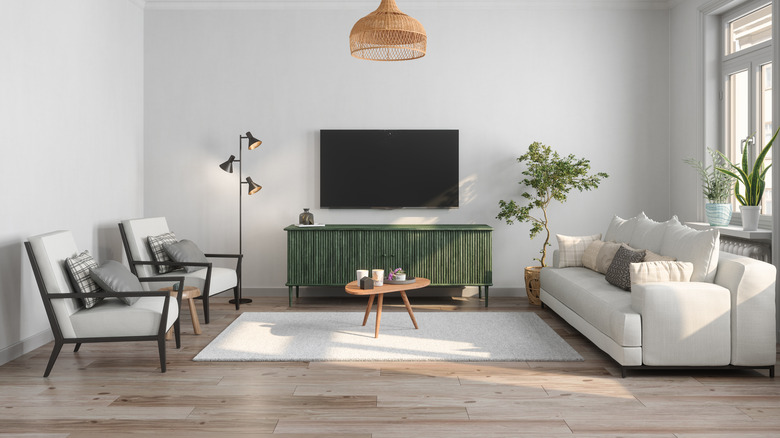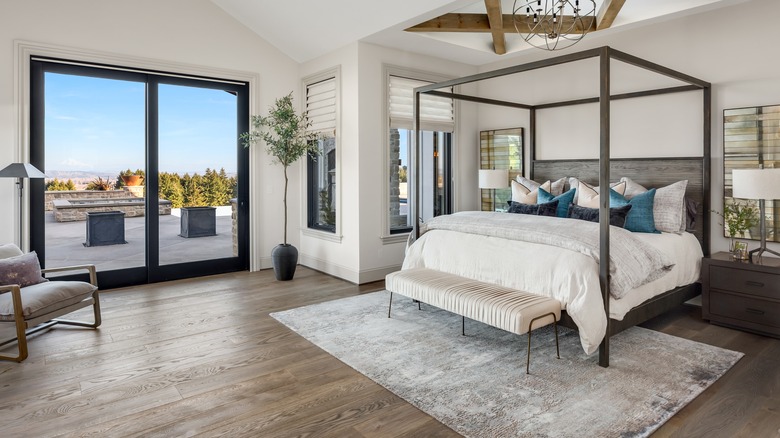The Furniture Sizing Rule HGTV's Emily Henderson Swears By
Designing a space requires a lot of moving parts. Balancing color, texture, and pattern can be challenging enough. But there's one detail that's often overlooked when putting a room together: scale. This design element has to do with an object's size and its comparison to the size of other items in the room and the room itself. This factor is important to create a balanced and harmonious space. Large furniture in a small room can make it feel tight and suffocating, while small furniture in a large room can feel isolated and a little strange.
Scale is about striking a balance between the size of different elements. However, this can be difficult for many people to envision. Luckily, interior designer Emily Henderson has a simple trick for sizing furniture that will make sense for any room. In fact, it's one of her top three design tips. It's all about taking a look at your room overall and matching the furniture to the proportions of the space.
Match the furniture to the room
While the idea of scale may be intimidating, Emily Henderson breaks the rule down in a simple way. "Finding the right scale can be tricky when building a room, but there is something simple that I always go back to," Henderson wrote on her website. "A large room should have large furniture, medium rooms should have medium-sized furniture, and small rooms, (you guessed it) should have more petite furniture."
When it comes to buying furniture for the space, Henderson suggests starting with the sofa, as it's often the centerpiece of the living room. "Once the sofa is chosen, scale the rest of the furniture and accessories to that sofa," she explained. Apply this same thought process to other pieces like the bed in a bedroom or the table in a dining room; it's imperative to match the scale of the larger furniture with the accent pieces. In one of her designs, Henderson uses large club chairs and a large coffee table to match the sofa's scale. But she explains how you can play around with balance. "We could have done two petite chairs in place of one of the larger club chairs," Henderson noted. Two smaller chairs can have a similar visual impact and scale as one large piece.

